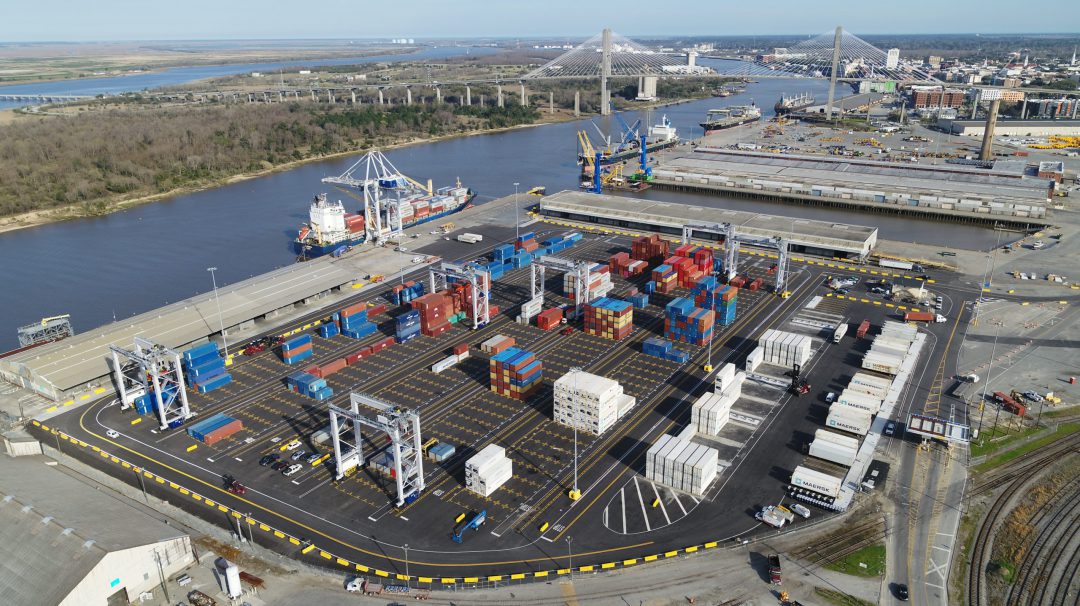The Georgia Ports Authority Board has approved a plan to renovate and realign the docks at the Port of Savannah’s Ocean Terminal to better accommodate its expanding container operation.
“For nearly 40 years, Ocean Terminal has been handling a mix of container ships and breakbulk vessels. The realignment is part of a broader effort to transform the terminal into an all-container operation, shifting most breakbulk cargo to the Port of Brunswick,” said Griff Lynch, GPA executive director. “Completion of this project will improve our flexibility and allow Georgia Ports to optimize cargo movement, supporting our customers in delivering goods to market efficiently.”
GPA plans to shift breakbulk cargo carried by Wallenius Wilhelmsen Ocean to Colonel’s Island Terminal in Brunswick. Construction has started on 360,000 square feet of dockside warehousing that will serve auto processing, as well as three additional buildings and 85 acres of auto storage space on the south side of the island.
Ocean Terminal
The 200-acre Ocean Terminal facility will be modified in two phases.
Work will begin with rebuilding the docks to provide 2,800 linear feet of berth space, capable of serving two big ships simultaneously. The docks will be served by new ship-to-shore cranes. On Tuesday, the GPA Board expanded its crane purchase by one, for a total of eight cranes slated for Ocean Terminal.
“As the dock construction progresses, GPA will continue to operate container ships at Ocean Terminal,” said Ed McCarthy, chief operating officer at Georgia Ports. “The work – which is funded by GPA’s Series 2022 Revenue Bonds – will be conducted alongside container and breakbulk operations.”
Apart from new cranes and berth enhancements, the overall project will bring expanded gate facilities and paving to allow for 1.5 million twenty-foot equivalent container units of annual capacity. Wharf renovations are slated to start in January 2023, with completion of the entire terminal redevelopment expected in 2026.
The Port of Savannah is coming off its busiest October ever, in which it handled nearly 553,000 TEUs. Port officials expect container volumes to taper downward toward the end of the year. Lynch said the opening of a new container berth at Garden City Terminal next summer and volume declining from historic highs will help expedite vessel service, which saw backlogs during the height of demand.
“While we are beginning to see an anticipated market correction, it is important that GPA move forward with projects like the Ocean Terminal enhancements to accommodate business growth,” said GPA Board Chairman Joel Wooten. “Through continued infrastructure improvement, we will ensure the free flow of commerce, and our ability to meet expanding customer demand.”
Over the past year, the GPA Board has approved $1.17 billion in infrastructure advancements, including expansions to berth, container yard and rail infrastructure.

























